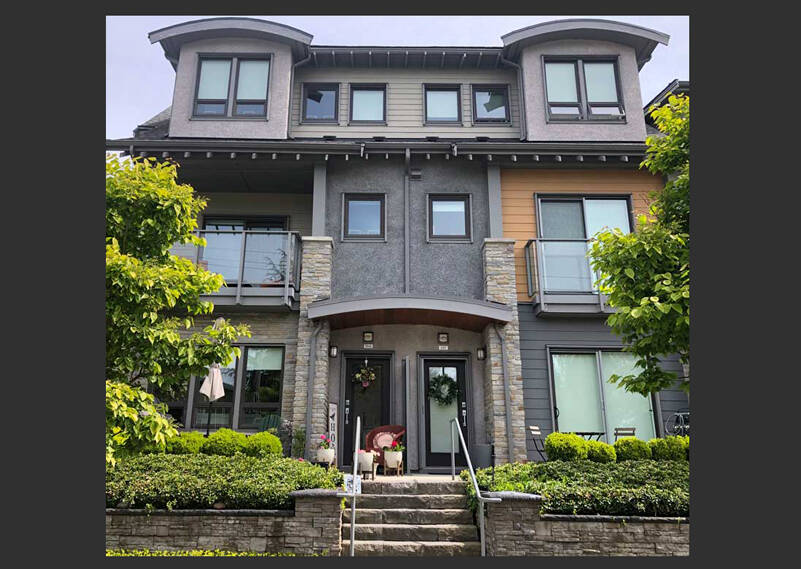By Morf Morford, Tacoma Daily Index
The housing market has been in turmoil territory for years now. It might be time to consider that, no matter what prices, interest rates or availability might be doing, there are a few standard, enduring principles that always frame the market.
Where?
Location, location and location are often framed as the three guiding principles of real estate. And location, is of course, key. But it’s not the only principle at work.
We in the Pacific Northwest know that growth is coming. And we know that is coming everywhere. Growth is coming where we want it – and where some of us don’t want it.
Planning and zoning are crucial, but will probably not look the way they used to look. And probably won’t be welcomed or appreciated by many of us.
Some places are emptying out, others are surging by the day.
The momentum is strong and not likely to change much – or quickly.
From distant cities to a neighborhood near you, change is coming.
When?
That growth is coming here soon. And for a long time to come.
Housing is kind of like food; if you don’t have it when you need it, it doesn’t really matter how much you have when you don’t need it. But we want it available when we do need it.
Virtually every homeless/houseless person had a home, and will again. It’s now that is the problem. And not just for them.
Puget Sound population is estimated to reach over 5.7 million by 2030, an increase of 18.2% from 2014 population estimates (Washington State Office of Financial Management, 2012b). That’s less than ten years away.
And for a little perspective, according to those same state records, the population of the Seattle area in 2005 was about 2,800,000 – about half of what it is expected to be in 2030.
For whom?
Every market needs a customer base. And “affordability” has become a code word for who, for whatever reason, can or cannot afford “market value” housing. But the ultimate “bottom line” of housing is that everyone needs it.
And in a housing market as volatile and dense with hazards as ours in recent years, anything can happen. To any of us. Here’s a link to a story of a man who, once a lawyer and mayor, found himself homeless.
The term “affordable” has become a buzzword in housing circles lately.
I think “affordability” is the wrong focus. In fact I am convinced that “affordability” says more about us, and our larger economic system than it could ever say about the logistics of constructing and maintaining housing.
What does “affordability” even mean? Obviously it means that a given good or service is within the budget of a potential customer.
If I go to a restaurant, for example, and I see a $500 lunch special, I won’t buy it. But I might buy something else. There or somewhere else.
Housing is, or at least used to be, kind of the same. If you couldn’t buy a place, you could always rent. And if you couldn’t afford this place, you could afford that place.
Where one lived, for centuries had, at least for many of us, a sense of choice rather than dependence on the vagaries of the marketplace.
And, no matter how low the budget, there was always somewhere else lower on the food-chain of housing.
The word “affordable” has come to mean “less than market rates” – and those “market rates”, like every other price point in a dynamic economy, keep changing.
But consider some of these Tacoma market rates; the Vista Del Rey in north Tacoma has 425 square foot studios on the lower end of the rent scale at $1,195 a month while The Henry on Dock Street has a 537 square foot studios for a shade over $2,000 a month.
A 278 square foot apartment at The Ellis on Fawcett Avenue, will cost $1,199 each month.
The Winthrop Apartments downtown, which provide Section 8 housing, rents a 330-550 square foot studio for $950-$1,150.
To put it in simpler terms, 300, or even 500 square feet is not very large, and if the cost of about $1,000 a month is greater than about a third of one’s income, the math just does not add up.
But that was then…
It would be easy to make the case that the housing market is healthy; it’s just human beings that are struggling.
Here in Tacoma, for example, the Tacoma Housing Authority (THA) recently (April 2023) announced that it opened its low-income housing waitlist for income eligible households.
THA added 1,800 households to their waitlist. About 15,494 households (representing 36,222 individuals) applied.
The application window was open for two weeks. Tacoma’s population is a shade under 220,000, with a population density of about 3, 990 people per square mile. That means about 10 square miles of our city is seeking THA subsidized or provided housing.
Tacoma is almost exactly 50 square miles. Could one in five of us really be in something approaching housing instability? It seems so.
If there were a working definition of the opposite of “affordable”, that equation alone should be convincing evidence.
Tacoma is expensive
Just about everyone agrees that rents and housing prices in general are high in Tacoma. But it wasn’t always this way. Tacoma used to be cheap, both compared to King County and the rest of the country. But not now.
The website apartmentlist.com shows that among America’s 100 largest cities, Tacoma has the nation’s 17th highest cost of living rate – 22 percent higher than the national average.
And it’s not just Tacoma
The U.S. Department of Housing and Urban Development’s (HUD) standard definition for housing affordability, defines affordable housing as housing where occupants are paying no more than 30 percent of their income on housing costs, including utilities.
HUD’s Office of Policy Development and Research shows that approximately 30 percent of Washington residents are paying more than that 30 percent of their income for housing.
To put it mildly, that’s not a healthy sign for any household or for any local economy – in fact, looking back on this time, it will be difficult to consider this situation as anything other than a crisis.
Our policies and preferences need to adapt and ensure that our precarious housing dynamic becomes more stable and accessible to everyone.





